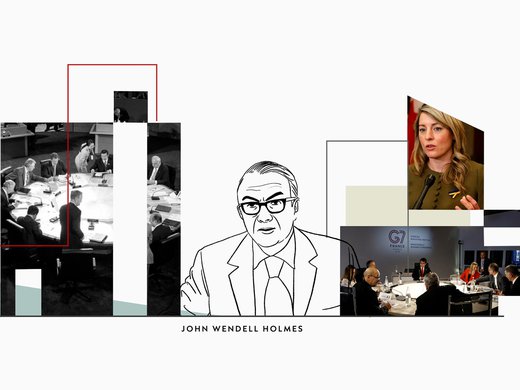At last week’s Climate Summit of the Americas this author had the privilege of chairing a panel discussion on Advancing Public Policy in a Low Carbon Economy: The Green Economy and Clean Tech Innovation.
The panel was composed of leaders from the non-governmental, and transnational corporate and academic sectors who described multi-sectoral strategies and contribution by government, business, the not for profit, and research community to building the low carbon economy and fostering clean tech innovation.
Stewart Elgie, professor of law and economics at the University of Ottawa, director of its interdisciplinary Environment Institute, founder and chair of Sustainable Prosperity, and a co-founder and member of Canada’s Ecofiscal Commission, provided a broad definition of clean technology innovation, described why government intervention is needed to put a price on carbon, and suggested what public policies and investments are most effective to encourage clean innovation. He described as an early success story the British Columbia (BC) carbon tax mechanism, which was established as revenue neutral by being matched with other provincial tax reductions. He noted that the BC economy had grown as GHG emissions decreased as a result of the tax, but that more recently the impact on GHG reductions had levelled off, likely because there was not a sufficiently long term and ambitious GHG reduction strategy.
The next panelist was Gary Gero, who as president of the Climate Action Reserve in California, guides the Reserve in promoting cost-effective greenhouse gas (GHG) emission reductions by operating the largest offsets registry in North America. He explained that in order to transform to a low carbon economy it is critical for the government to articulate a long term vision, with a predictable but increasingly demanding ambition for reducing GHGs. This creates a stable environment in which private and public actors and citizens can make an orderly and gradual adjustment of their practices to contribute to establishing a low carbon economy. He described how California has used multiple levers to address climate change, with cap and trade being only one element, and support to green and clean innovation being another.
Panelist Walter Dissinger, global chief executive officer at Votorantim Cimentos, the largest cement company in Brazil and eighth largest in the world, including holdings in Ontario, described what his company is doing for climate change mitigation and adaptation. Cement is a high GHG emitting industry, accounting for 5% of global emissions and increasing at a rate of 2.5% a year, in close step with the growth of the global economy. About 40% of cement related GHG production comes from burning fossil fuels to heat the kilns and 50% comes from calcination as limestone (calcium carbonate) is heated to breakdown to calcium oxide and CO2. The remaining 5-10% of emissions comes from powering plant machinery and transportation of cement.
The cement industry can take steps to mitigate its climate change impact by using alternative fuels such as natural gas, biomass and waste-derived fuels; efficiency measures such as using dry kilns instead of wet ones and other technical and mechanical improvements; using blended cement to reduce the proportion of cement, if this can be done without increasing other environmental risks from incorporation of toxic heavy metals into the construction material; and by carbon capture and storage including accelerated carbonation whereby cement is itself used as a carbon sink. The need for mitigation by the cement industry is particularly acute given that it will be a significant component in developing resilient infrastructure for climate change adaptation. Dissinger noted that Votorantim is expanding its use of clean energy, using biofuel in Brazil, and conducting research and development in a private public partnership in Ontario to determine whether biochemistry can be used to capture and convert GHG emissions from cement production.
Carbon taxes or cap and trade schemes can create the kinds of incentives that push industry to innovate and find ways of reducing their GHG total emissions. However, in a global cement market, where not all jurisdictions impose carbon pricing, market share can readily be lost to lower priced imports. It was noted that since imposition of the BC carbon tax, there has been a significant increase in imports of cement and a reduction in local BC production. Various solutions to this problem were discussed, including providing an initial carbon tax holiday to local producers, returning carbon pricing revenues in the form of subsidies to encourage clean innovation, and border price adjustments to compensate for regulatory arbitrage.
The last panelist, Ronaldo Seroa da Motta, Professor of Environmental Economics at the State University of Rio de Janeiro, Brazil, presented research showing the motivations of Brazilian corporations for investing in clean technology research and development. His research showed that supportive government policies and programs were critically important to encouraging clean innovation by the private sector. He noted that reapportioning revenues to reverse regressive effects of carbon taxes could have untoward environmental effects by increasing carbon consumption by the poorest segments of society. Seroa da Motta advocated for using the proceeds of carbon pricing mechanisms for further investment in promoting clean innovation through public private research and development partnerships.
The panelists discussed the greatest challenges and opportunities for governments and businesses in building the low carbon economy and fostering clean tech innovation. They acknowledged the problems of uncertainty and capital flight, regulatory arbitrage and increased transaction costs that can arise when national and subnational governments and businesses experiment with different approaches to pricing carbon and encouraging the transition to a low carbon economy. They considered that both regulatory and market mechanisms are needed to foster green, clean eco-innovation and identified design features in carbon pricing systems that are most likely to be effective in encouraging innovation. These included using long range planning and implementation to allow gradual adjustment of private, public and individual behaviours; using a combination of regulatory and market carrots and sticks to marshal necessary transformation; reinvesting proceeds of carbon pricing in public-private clean innovation partnerships; increasing cross-border coordination and integration of carbon pricing mechanisms; and developing a coherent international approach to border adjustments.
With non-state actors and sub-national governments collaborating in transnational carbon trading and public-private clean innovation partnerships we see the practical and political limitations and rigidities of international rule of law being circumnavigated by those seeking workable solutions for global climate change mitigation and adaptation. At some point – starting in Paris at the COP 21 - international rule of law will need to catch up.


